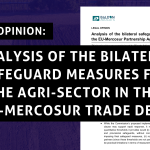Written by Ana-Maria Seman, Regional Climate and Infrastructure Lead at WWF Central and Eastern Europe.
In pursuit of the EU’s ambitious 2030 target of 60GW of offshore wind capacity, there is growing recognition of its importance in decarbonising the continent’s energy use. While Nordic nations have made substantial strides in establishing ecologically integrated offshore wind farms, countries in Central and South Eastern Europe are just now embarking on this journey.
New offshore wind energy legislations in Romania and Bulgaria, accompanied by the launch of initiatives like the Black Sea Renewable Energy Coalition (BSREC), offer hope for progress in the Black Sea basin, the only EU sea without operational wind turbines. However, substantial obstacles remain, including the absence of marine spatial plans, regulatory frameworks, and data accessibility. Additionally, collaborative efforts spanning borders and sectors, even with non-EU nations, are crucial for success.
The role of offshore wind energy is indispensable for achieving decarbonisation targets in the Black Sea basin, particularly considering the energy needs of Romania (over 13 TWh) and Bulgaria (6 TWh) by 2030*. Although the technical potential for Bulgaria’s and Romania’s shared coast is estimated to be between 70 and 100 GW, integrated planning across all sea uses is essential to avoid conflicts and ensure realistic project planning.
BSREC’s establishment seeks to harness offshore energy potential in the project countries by fostering informal stakeholder networks, enhancing readiness for action, and promoting effective governance. It draws lessons from the successful OCEaN coalition’s offshore wind planning experience in Nordic countries which seeks to harmonise collaboration among NGOs, transmission system operators and energy developers. This coalition is helping to accelerate the deployment of offshore wind energy and grid infrastructure while ensuring alignment with nature protection and healthy marine ecosystems.
Planning makes perfect
A series of challenges must be systematically tackled across the Black Sea basin nations. Central among these challenges is the vital role of Marine Spatial Planning (MSP) and an ecosystem-based approach to sea utilisation.
MSP facilitates the synergy of renewable offshore energy production with nature protection and other existing sea activities. Proper application of MSP can streamline planning in marine areas, reconciling conflicting interests for various marine users. However, a recently adopted MSP in Bulgaria and a draft MSP in Romania fall short, lacking comprehensive assessment of offshore wind site selection and integration with other sea uses. They also inadequately incorporate ecological data, offering mere inventories of other existing data sets without integrating them.
Currently, the lack of comprehensive biodiversity data hinders strategic planning. Urgent investment in nature sensitivity mapping, especially concerning offshore bird migration routes and aquatic environments, is imperative. Recognising MSP’s central role, shaping coalitions like BSREC can jointly advocate for improved MSPs in Romania, Bulgaria, Turkey, and Georgia, alongside data exchange. This approach could identify suitable sites, including cross-border considerations, while minimising conflicts and impacts.
Any site selection for offshore wind development should never be done independently from Maritime Spatial Planning. Similar to onshore renewable energy developments, proper offshore planning can minimise conflicts among stakeholders, limit any impact that may affect the local marine environment and maximise the benefits of the development for local communities.
Working together to unlock the Black Sea’s energy potential
Harmonising with MSP, countries should adopt a centralised approach in their tender procedures, preselecting environmentally less sensitive sites for offshore wind projects. This ensures alignment with maritime spatial planning and mitigates sea space use conflicts.
Furthermore, stakeholders including marine environment experts, energy developers and regulators can collaborate closely in ensuring that countries make full use of the option given by the European Commission to include 30% of non-price criteria in their tenders for offshore wind projects.
This practice would support giving preference to projects that include appropriate mitigation and restoration measures in order to reduce negative impacts on marine ecosystems. Projects can also go further in including actions that improve environmental conditions (e.g. restoration of reefs) or that engage communities to insure co-benefits from projects.
Stakeholder coalitions, such as BSREC, are pivotal in uniting energy and environmental groups for integrated sea projects. These projects can simultaneously advance offshore wind and address environmental and social goals, creating a synergy that benefits all parties involved.
*Data extracted from Pathway Explorer: Bulgaria LTS Central (CSD) scenario and Romania WAM Scenario (EPG)
For more stories, check the Together for 100% Renewable Europe website.



